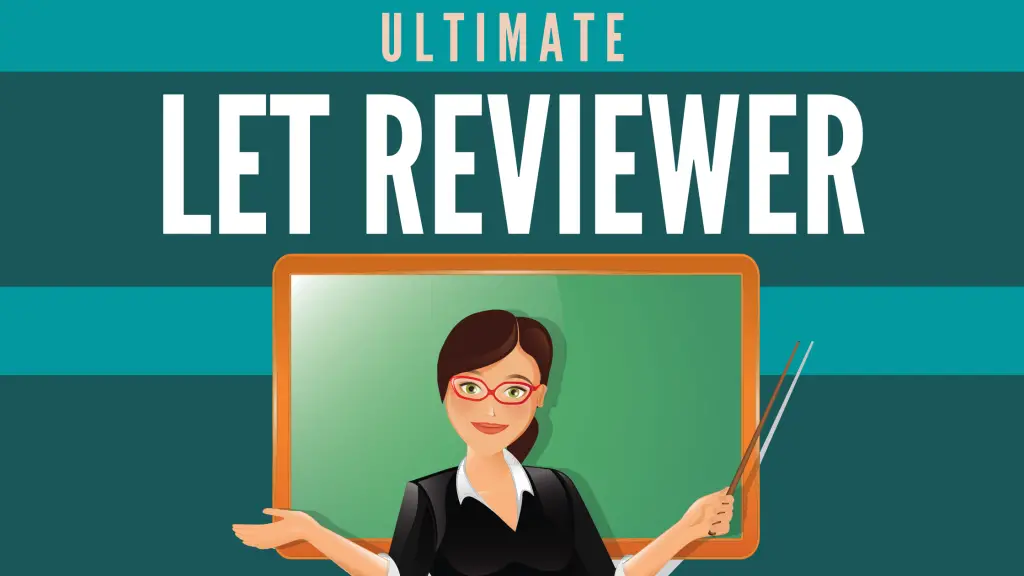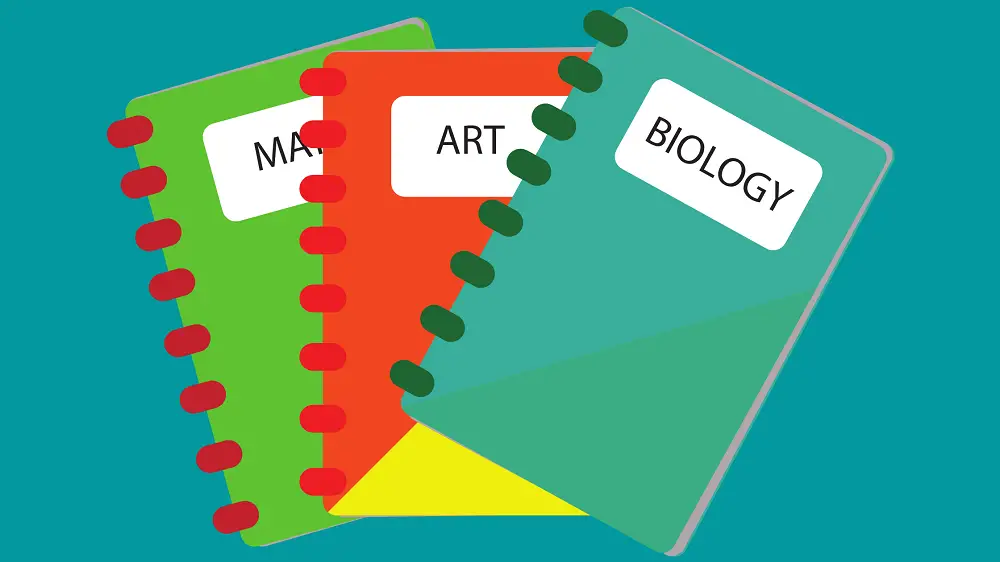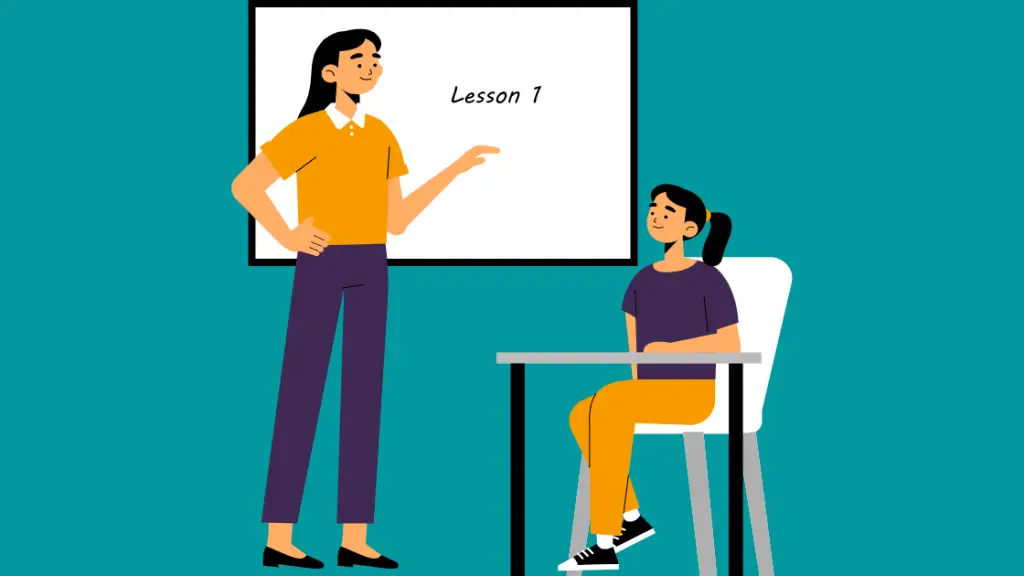LET Reviewer
Preparing for the Licensure Examination for Teachers (LET) means you’re one step away from your dream of becoming a professional teacher.
With a passing rate of more than 50% last January 20221, LET can make or break your path to being a licensed educator.
Just like any examination, LET requires preparation that involves learning effective test-taking strategies and using good review materials. For this reason, we’ve prepared this LET reviewer to refresh your mind on the concepts covered by the exam and to increase your chances of being part of the roster of the country’s future educators.

Table of Contents
- What Is the Licensure Examination for Teachers (LET)?
- How To Use This LET Reviewer
- 1. General Education Component
- 2. Professional Education Component
- 3. Area of Specialization (Majorship)
- General Tips To Pass the LET
- Frequently Asked Questions
- References
What Is the Licensure Examination for Teachers (LET)?
Passing the Licensure Examination for Teachers (LET) is one of the requirements to become a professional licensed teacher in the country’s public elementary and secondary school system. The LET is administered twice every year (September and March) in various testing centers nationwide by the PRC Regulatory Board for Professional Teachers.
Before you start dusting off your old books and notes for your review sessions, you need to familiarize yourself first with the coverage of the LET2.
Both elementary and secondary teacher examinees have to take two subtests: (1) General Education and (2) Professional Education. However, secondary teacher examinees must take a third subtest dedicated to their Area of Specialization.
To pass the LET, an examinee must obtain an average of at least 75% with no rating lower than 50% in any subtests.
How To Use This LET Reviewer
This LET reviewer provides a discussion on each topic that might be included in the exam. There are also topic summaries that are best for those who are cramming. Printable flashcards are available as learning aids for visual learners or anyone who wants to level up their review experience. Finally, every end of each topic has a set of practice questions (and their respective answer keys) to gauge your learning.
1. General Education Component

Both Elementary and Secondary Teacher Examinees
This subtest covers lessons you’ve encountered in your elementary and high school classes. This part comprises 40% of the LET grade for elementary and 20% for secondary teachers.
General Education Modules and Readings + Printable Quizzes
Subjects included in this LET component and the corresponding topics under them are listed below.
a. English
- Study and Thinking Skills
- Writing in the Discipline
- Speech and Oral Communication
- Philippine Literature
- Master Works of the World
b. Science
- General Biology
- Physical Science
- Earth Science
c. Mathematics
d. Filipino
- Komunikasyon sa Akademikong Filipino
- Pagbasa at Pagsulat Tungo sa Pananaliksik
- Masining na Pagpapahayag
e. Social Sciences
- Philippine Government New Constitution with Human Rights
- Philippine History
- Basic Economics, Taxation, and Agrarian Reform
- Society and Culture with Family Planning
- Rizal and Other Heroes
- Philosophy of Man
- Arts
- General Psychology
- Information and Communication Technology (ICT)
General Education Review Tips and Tricks
- English and Filipino have the highest share of questions in this subtest, so you have to dedicate more time preparing for them. Aside from mastering their respective grammar rules and usage, familiarize yourself with English and Filipino literature. There are some questions about famous writers (e.g., Shakespeare, Edgar Allan Poe, Nick Joaquin, Francisco Baltazar, etc.) as well as literary masterpieces (e.g. The Iliad, Shakespearean plays, The Divine Comedy, etc.)
- The subtest has a broad scope, so you must retain as much information as possible within your limited time. Refrain from delving deeper into each topic since it’s time-consuming. An overview of these concepts is sufficient.
- Reading the Philippine Constitution should give you enough information about our political system. No need to remember every detail of our laws; instead, focus on those related to the structure and functions of our government (e.g., branches of the government, qualifications for public officials, bill of rights, duties of the state, etc.)
- Calculators are prohibited during the LET (except for those specializing in math). So, ensure you can perform basic arithmetic with ease and speed.
- Answering math mock exams repeatedly is the best way to develop your quantitative skill. It’s impossible to master a lot of mathematical concepts within a week, so you have to start answering practice tests as early as possible.
- Refrain from simply memorizing scientific terms and concepts. Most questions require the application of these concepts, so you must have at least basic comprehension of how these concepts work.
- Don’t take this portion lightly. Some examinees failed this part due to overconfidence. Consistent practice is the key to gaining mastery of the general concepts.
2. Professional Education Component

Both Elementary and Secondary Teacher Examinees
Questions in this subtest are about subjects related to the teaching profession and concepts you have learned in your major classes. It comprises 60% of total LET grades for elementary and 40% for secondary teachers.
Professional Education Modules and Readings + Printable Quizzes
- Teaching Profession and Social Dimensions of Education
- Principles of Teaching, Educational Technology, Curriculum Development
- Facilitating Learning, Child and Adolescent Development
- Assessment of Student Learning, Developmental Reading
- Field Study, Practice Teaching
Professional Education Review Tips and Tricks
- Get a sense of what the questions in this subtest look like by taking mock exams. Some examinees stated that some LET questions are similar to the previous exams they took. Thus, mock exams will give you an idea of what concepts are usually asked and how to answer them.
- Take note of recent changes in the curriculum, if there are any.
- Most questions are about concepts and theories you’ve learned in your education classes. Hence, it might be helpful to reread your old notes and lectures if you have any. Allot at least 1 to 2 hours daily for reading to ensure effective recall of those previous lessons.
- Don’t stress too much with this portion. Although this part seems challenging, there are questions that can be solved just by using your common sense and intuition.
3. Area of Specialization (Majorship)

For Secondary Teacher Examinees Only
The questions included in this portion will depend on your specialization. This part comprises 40% of the total LET grade of secondary teachers.
Area of Specialization Modules and Readings + Printable Quizzes
Shown below is the coverage of each subject specialization:
a. English
| Topic | Subtopics |
| Remedial Instruction in English | |
| English for Specific Purposes | |
| Theoretical Foundations of Language and Literature | Introduction to Linguistics Structure of English Introduction of Stylistics Literary Criticism |
| Literature | Mythology and Folklore Afro-Asian Literature English and American Literature |
| Methodology | The Teaching of Speaking, Listening, and Reading Teaching of Literature Preparation and Evaluation of Instructional Materials Language and Literature Assessment Language and Research Campus Journalism Translation and Editing of Text Speech and Stage Arts Creative Writing |
b. Filipino
| Topic | Subtopics |
| Mga Batayang Teoretikal | Introduksyon sa Pag-aaral ng Wika Panimulang Linggwistika |
| Wika | |
| Panitikan | |
| Metodolohiya | |
| Pagtataya at Ebalwasyon | |
| Kagamitang Panturo |
c. Mathematics
d. Biological Sciences
- Biological Science I and II
- Organic Chemistry
- Inorganic Chemistry
- Cell Biology
- Ecology
- Microbiology
- Genetics and Evolution
- Biochemistry
- Anatomy and Physiology
e. Physical Sciences
| Topic | Subtopics |
| Chemistry | Nature of Science Atomic and Molecular Chemical Bonds Conservation of Matter and Stoichiometry States of Matter Acids and Bases Solutions Chemical Thermodynamics Chemical Kinetics and Equilibrium Organic and Biochemistry Nuclear Processes |
| Physics | Physical Quantities and Vectors Mechanics Electricity Magnetism and Electronics Thermodynamics Modern Physics Light and Geometrics Optics Earth and Space Astronomy and Environment |
f. Social Studies/Social Sciences
| Topic | Subtopics |
| Trends in Social Studies | |
| Research | |
| Geography | |
| Sociology and Anthropology | |
| Politics, Governance, and Law-related Concepts | |
| World History and Civilization I and II | |
| Asian Studies | |
| Economics | Microeconomics Macroeconomics Economic Planning and Strategy |
| Methods | Teaching Approaches in Secondary Social Studies Productions of Instructional Materials Building Bridges Across Social Science Discipline |
g. Values Education
| Topic | Subtopics |
| Foundation of Values Education (VE) | Philosophical and Ethical Foundations of VE Socio-Cultural, Anthropological, and Legal Bases of VE Psychological Theories of VE |
| Personhood Development | Personhood Development Dynamics of Intra and Interpersonal Relations Psycho-Spiritual Development Management of Behavior Problems |
| Transformative Education | Family Life and Filipino Values System Education for Human Rights and Responsible Citizenship Foundations of Gender Studies Peace and Global Education Information Technology and Human Development Moral Issues and Concerns in Contemporary Living |
| Work Ethics and Community Service: Commitment to Social Responsibility and Accountability | Career Development and Work Values Values Education through Community Service |
| Approaches and Methodologies | Facilitation: Theory and Practice Teaching Approaches and Strategies in Transformative Education Values Integration in the School Setting |
| Research and Evaluation | Behavioral Statistics Development of VE Instruction Materials and Assessment Tools Research |
h. MAPEH
| Topic | Subtopics |
| Foundations of MAPEH | Methods and Strategies of Teaching MAPEH Coaching and Officiating of Sports Events Dance Competitions and Music Activities Organization and Management Research Special Education in MAPEH |
| Music | Philippine and Asian Music Solfeggio and Applied Piano Integrated Music Theory Music Literature Choral Works Conducting and Rondalla Playing Instrumentation |
| Art Education | |
| Physical Education | Anatomical, Mechanical, and Physiological Bases of Movement Gymnastics Philippines Folk Dance Team Sports Aquatics International Folk Dance and other dance forms Athletics Individual, Dual, and Combative Sports |
| Health Education | Personal Community Environmental Health Safety Education and First Aid Health Practicum |
i. Agriculture and Fishery Arts
- Functional Application of Knowledge
- Breeds of Farm Animals and Fish
- Pests and Diseases Affecting Animals
- Fish Propagation
- Marketing Strategies in the Industry/Entrepreneurship
- Proper Care and Management of Agricultural and Fishery Products
j. Technology and Livelihood Education (TLE)
- Basic Drafting
- Business Math
- Basic Electricity
- Basic Plumbing
- Cosmetology
- Foods
- Carpentry and Masonry
- Basic Electronics and Entrepreneurship
Area of Specialization Review Tips and Tricks
- Since you’ve already studied the topics in your specialization during your undergraduate days, spend most of your review sessions for this subtest taking practice exams instead of rereading your previous lessons.
- Study with people that have the same major as you. It is possible that they know something about your major that you could not cover in your undergraduate classes.
General Tips To Pass the LET
- Create a schedule or plan that sets which lessons you’ll study each day. This gives structure to your self-review and allows you to cover as many topics as possible. Furthermore, it helps you determine how much time you can realistically allot for review in case you have to perform other tasks simultaneously (e.g., family responsibilities, work, etc.).
- Allot at least 4 hours a day reviewing. If it’s difficult for you to study continuously for hours, use the Pomodoro technique, where you have to split that 4 hours into smaller blocks of 25 minutes with 5-minute breaks in between.
- Recognize your weakness/es as soon as possible. To do this, take a diagnostic exam and identify which subjects where you think you will perform worst. This helps you identify what field/s you must spend more time on to address your weakness.
- Learn to anticipate the answer to the question before reading the given choices. The wrong choices are there to confuse you; however, by already having an answer in your mind after reading the question, you will be less likely to be swayed by misleading choices.
- Train yourself to answer a question in less than a minute. In the actual LET exam, examinees will be under time pressure. Hence, it’s important to hone your time management skills to reduce your anxiety when taking the exam.
- Prepare a logbook where you can write what you’ve learned for the day. This is to keep you from the trap of reviewing the same concepts again and again without realizing that you have little time left to cover lessons you haven’t studied yet.
- LET is not just a test of memory and knowledge but also endurance. Remember that you’ll be taking more than a 5-hour exam, so you must be prepared physically and mentally. Hence, do not forget to take some rest while reviewing. Sleep early before the exam and have a good breakfast.
Frequently Asked Questions
1. How many hours is the LET exam?
The LET for elementary teachers is about 5 hours long, while the LET for secondary teachers is about 8.5 hours long.
2. Is LET a board exam?
Yes, the Licensure Examination for Teachers is the board exam that every aspiring professional teacher must pass before they’ll be able to practice their profession in a Philippine Public School System.
3. How many times can I take the LET?
As long as you are qualified and able to submit the documentary requirements, you can retake the LET as many times as you wish.
4. Is the LET exam difficult?
Previous examinees said that the General Education portion is difficult while the other subtests are not that much. Overall, the LET exam is manageable to pass with enough preparation and proper reviewers.
References
- RESULTS: January 2022 Licensure Examination for Teachers. (2022). Retrieved 1 April 2022, from https://www.rappler.com/bulletin-board/results-january-2022-licensure-examination-for-teachers/
- Professional Regulation Commission (PRC). (2021). Program of the Licensure Examination for Professional Teachers (LEPT) on March 28, 2021 (Sunday) [PDF]. Retrieved from https://www.prc.gov.ph/sites/default/files/LET%20PROG-%20MARCH%202021.pdf
Copyright Notice
All materials contained on this site are protected by the Republic of the Philippines copyright law and may not be reproduced, distributed, transmitted, displayed, published, or broadcast without the prior written permission of filipiknow.net or in the case of third party materials, the owner of that content. You may not alter or remove any trademark, copyright, or other notice from copies of the content. Be warned that we have already reported and helped terminate several websites and YouTube channels for blatantly stealing our content. If you wish to use filipiknow.net content for commercial purposes, such as for content syndication, etc., please contact us at legal(at)filipiknow(dot)net